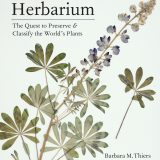About the Speaker
Barbara M. Thiers, Ph.D., is the Patricia K. Holmgren Director of the William and Lynda Steere Herbarium at The New York Botanical Garden, President of the American Society of Plant Taxonomists, and past president of the Society for the Preservation of Natural History Collections.
Her particular interest in the application of information technology to herbarium management and passion for increasing the scientific community’s access to specimen-based data have led to the development of the C. V. Starr Virtual Herbarium, a searchable database of the Steere Herbarium’s digitized specimens.


